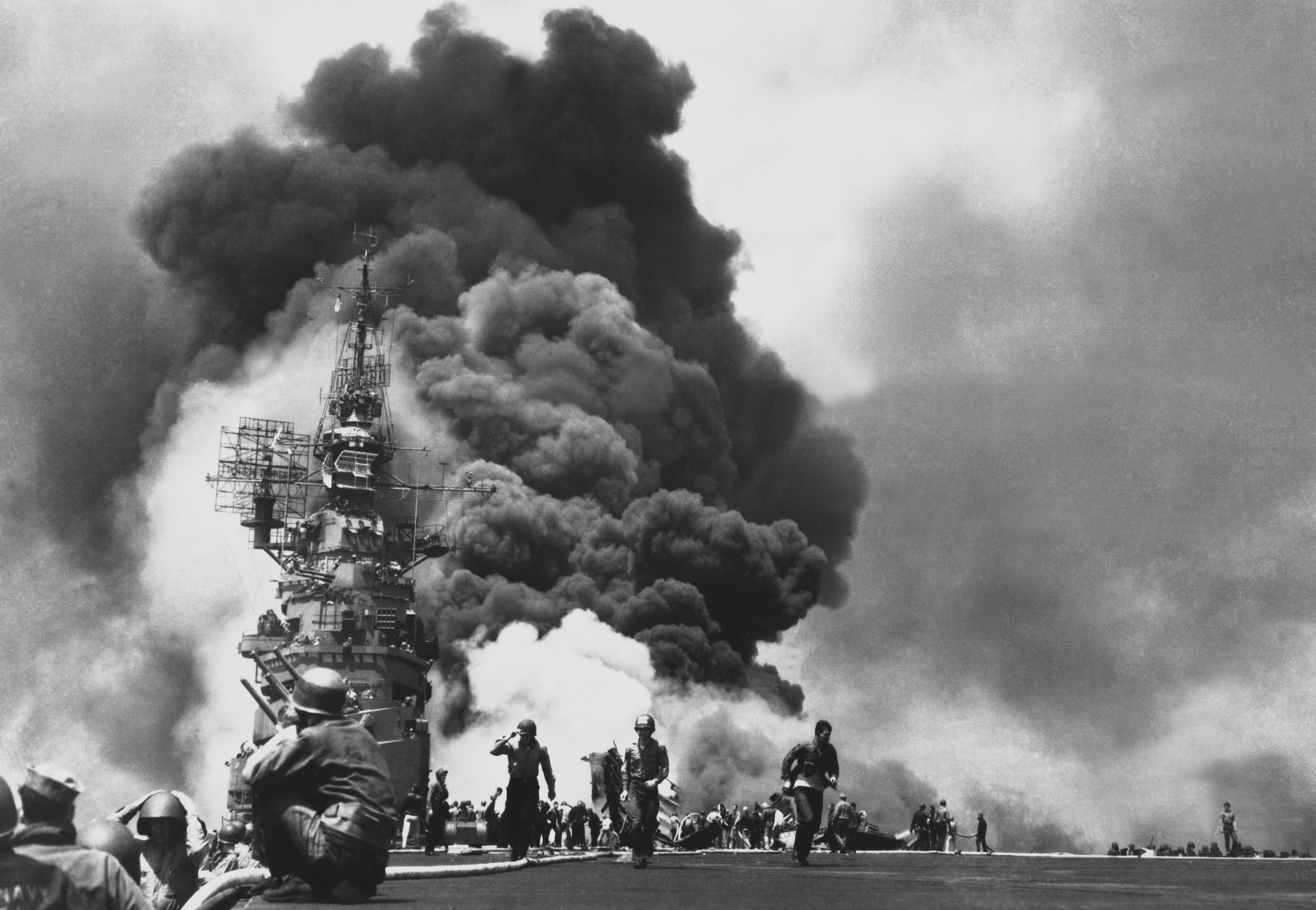Re: My trip to U.S. Naval Station Norfolk & Newport News Shipbuilding
I think majority of American carriers in WWII had wooden decks? and British carriers did not, so UK suffered less to Kamakazi attacks? something alone those lines
I think Kamakazi attacks were sporadic, single and staggered, had they synchronized the attacks, came in multiples, and focused in on just one target Kamakazi attacks could have pulled off more damage, they would not do simultanous attacks meaning the escorts could concentrate their fire on the fighters coming in, i guess no Kamikazi ever lived to bring back the advice or report this finding which was observed by the USN
but i bet it must have been a terrifying weapon when it was first used, i mean never seen anything like it, and at the time many didnt even know anything about Japanese culture and its people etc etc
Well, it wasn't really until Okinawa that the Japanese were able to launch massive Kamikazi attacks...at other place they were just too far away from the home islands, although they still had less intensive attacks which still caused a lot of damage throughout the war.
At Okinawa the US fleet, which had 300 warships and 1600 other vessels (transports, tankers, ammo ships, etc) were hard pressed. A totaL of 36 US ships were sunk off of Okinawa, 21 of them warships. Almost 400 other ships were damaged, some of them heavily. The US suffered its greatest naval losses off of Okinawa of the entire war. Over 5,000 sailors were killed and almost 5,000 more wounded. The attack came in waves, some single, but most were well coordinated with many planes. But the US had already developed tactics to protect the larger ships and keep the attackers from getting through.
These involved picket lines of anti-aircraft destroyers, and some cruisers set many miles from the larger capitol ships. Also, the US carriers had combat air patrols in the air specifically to ward off and shoot down such attacks. The picket line destroyers suffered heavily because many of the attacks would focus on them...they thereby served their purpose of protecting the larger shiops. But some waves still pressed on and got through.
USS Bunker Hill seconds after the second Kamiakazi explosion which came less than one minute apart.
The USS Bunker Hill, CV-17 was one of those that they did get through to. On May 11, 1945 two Kamikazis hit her and she was almost sunk. She lost over 340 killed and another 260+ woundsed with over 40 lost and presumed dead (but never found). She was known as the most heavily damaged carrier of the war that survived (although some argue that the USS Franklin, CV-13, should get that dubious distinction when in March of that same year she manuevered in just a few miles off the Japanese coast and conducted attacks when she was hit by two 550 lb bombs on her loaded and armed flight deck and hangar deck. She was ultimately towed from the scene and repaired, but she lost over 800 killed and 400 wounded). The USS Enterprise, which on several occassions during the war was severely damaged and the Japanese thought sunk, was also damaged off of Okinawa (though not as seriously as the Bunker Hill) by Kamikazi attacks.
There were over 190 seperate Kamiakazi attacks at Okinawa in six weeks (that's over 30 ber week, or over 4 per day), and just short of 2000 aircraft identified and destroyed as Kamikaze attackers during that battle.
Here's a link to a good article on PBS about the attacks, and in particularly about one of the destroyers involved taking the brunt of the damage.
It talks about the attack and the USS Newcomb, on April 6, 1945 when the fleet was attacked at one time by over 300 suicide attackers. Harrowing stuff.
BTW, the Bunker Hill was fully repaired and served with the US Navy until the early 70s. Although she lay in the reserve fleet for many years under differing designations after the late 1940s, it wasn't until the mid 1960s when she actually was put into service again, serving as a stationary test vessel from the mid 1960s until she was ultimatly sold for scrap in 1973.

